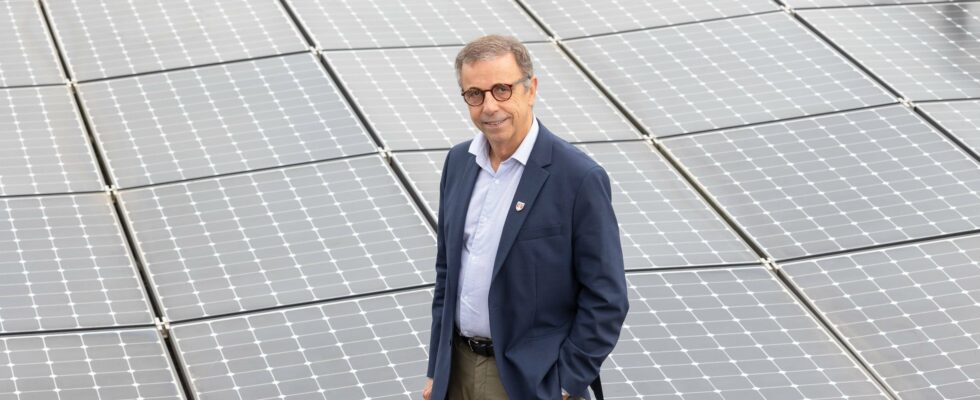“Even a sinister legacy can become a source of the future.” Pierre Hurmic sees light at the submarine base built during the German occupation. This black relic of the Second World War will soon be covered with 13,200 square meters of photovoltaic panels. A decisive step to achieve the objective set by the environmentalist mayor of Bordeaux: equipping 60,000 square meters of municipal roofs by 2026, in order to produce green energy covering 41% of the City’s needs.
“In 2020, energy autonomy did not exceed 3%,” recalls the man who is increasing the installation of panels during renovations or new constructions, on schools, gymnasiums or swimming pools. A few dozen square meters here and there, until this major announcement concerning the submarine base in September. Work will begin in February.
This will be followed by the bus depot (1,000 square meters), a section of the Lescure Park grandstand (1,200 square meters) and solar courtyards (1,600 square meters) built above the tennis courts of the sports venue. “Cities constitute a formidable resource of land already artificialized for producing carbon-free and local energy,” advocates Pierre Hurmic. According to municipal services, the Gironde capital offers 588,600 square meters of solarizable surface area – including car parks and private buildings. This is why the mayor launched the Bordeaux Alliance for Solar Energy in the spring, bringing together local authorities, the State and a first round of institutional and private actors (social landlords, building federation, supermarket brands, universities, CHU, SNCF, La Poste, etc.). “I want to be a transmission belt to promote this renewable energy throughout the territory.” Among individuals, the number of applications for planning permission in this area jumped from 37 in 2020 to 276 in 2023, and the rate of favorable opinions from 62% to 97.8%. “The principle is ‘yes’. A ‘no’ answer should be the exception.”
The one who is a civil lawyer has even become the defender of the solar cause within the Unesco cities club in order to combine photovoltaics and heritage in protected areas. He made it the theme of his speech in 2022 in Quebec. “Materials are evolving,” he recalls, after inaugurating 160 square meters of “slate panels” in June on the annex town hall of Caudéran – classified as a historic monument. “Faced with the climate emergency, minds are changing,” he slips. The architect of Bâtiments de France had initially rejected the cover of the submarine base – before changing his mind.
“The time is no longer for the construction of pyramids,” says the man who refuses to be a building mayor. But the pharaohs also worshiped the sun and its totem, this is the project to cover the ring road. He was the first politician to carry the idea of town planner Jean-Claude Laisné of transforming the ring roads into gigantic energy plants – and rainwater collectors.
The 45 kilometers in question – 2 million panels, more than 3 billion euros of investments – are the responsibility of the State. The prefect said he was in favor of an experiment “on a boulevard” initially, Aliénor d’Aquitaine or the Jules Ladoumègue course, to test the shade modules 60 meters long and 17 high – sequenced to avoid the tunnel effect and allow emergency access by helicopter. The solar ring would cover the electricity needs of 420,000 metropolitan households. The mayor, who prefers to travel by bike, is already thinking of also equipping the cycle paths.
